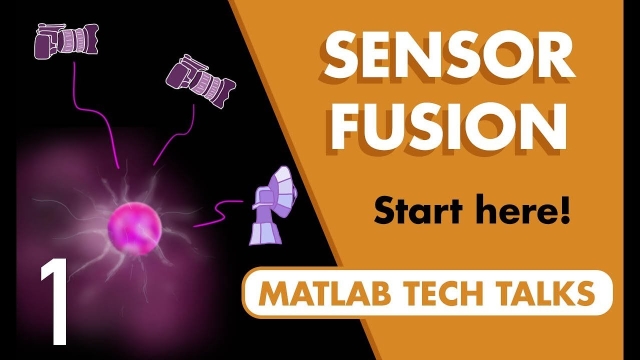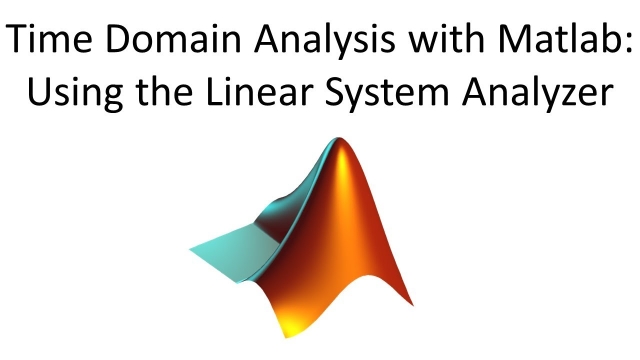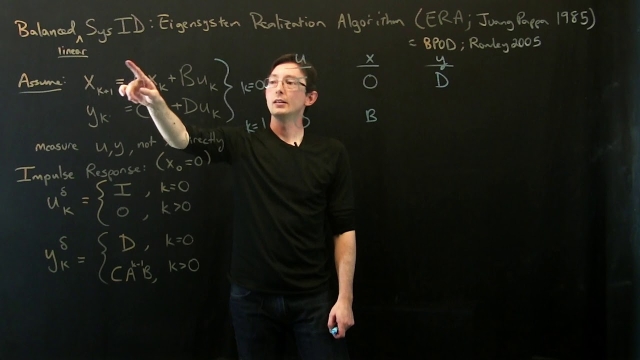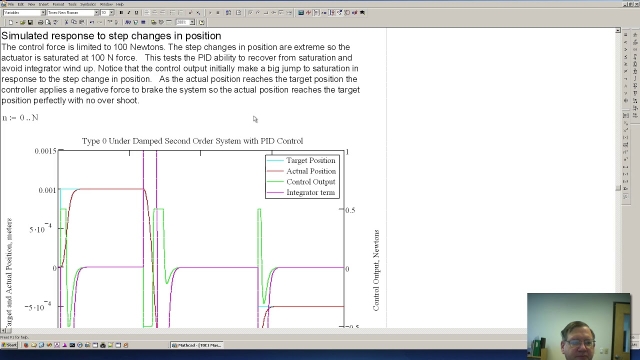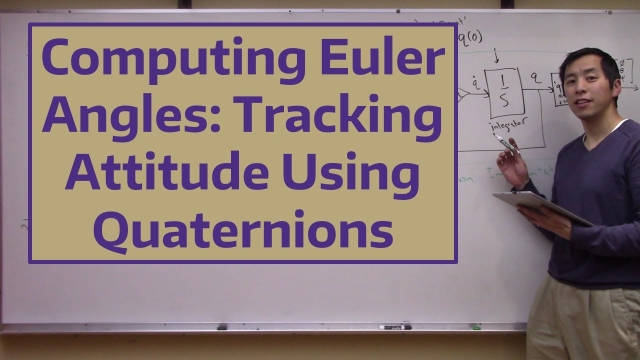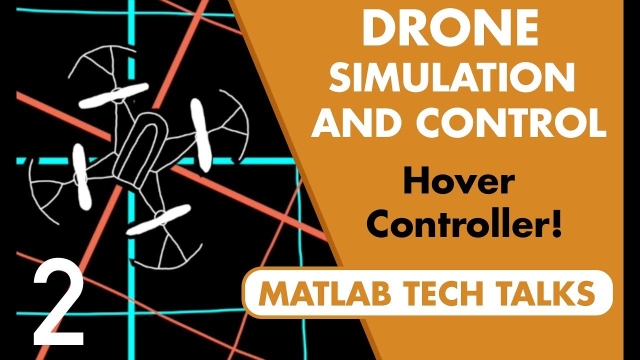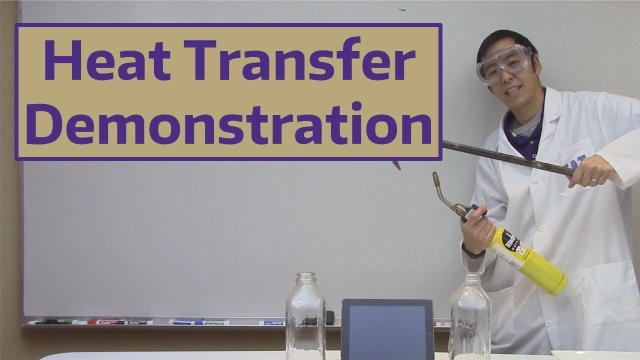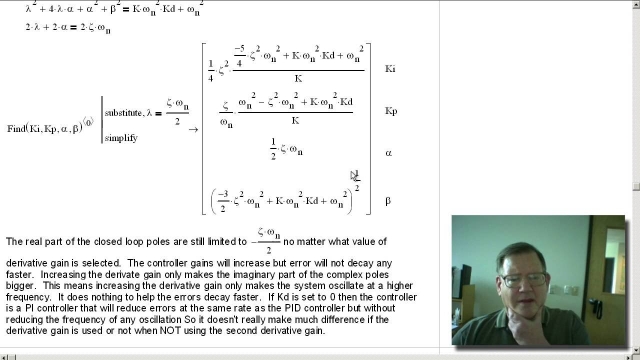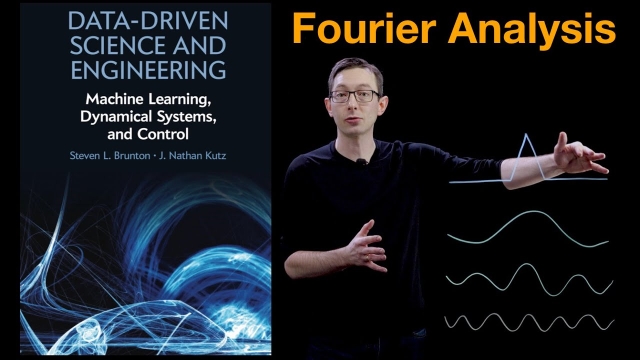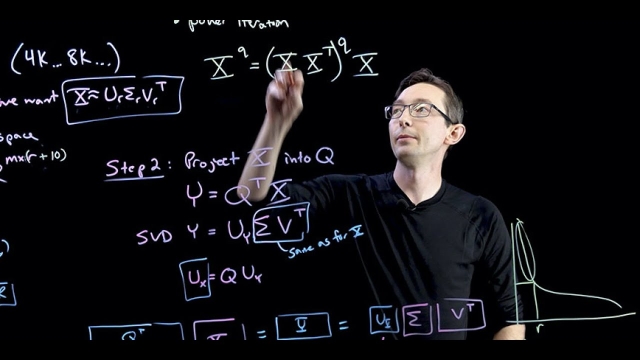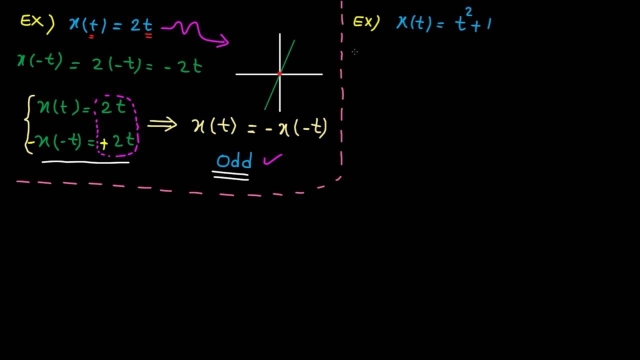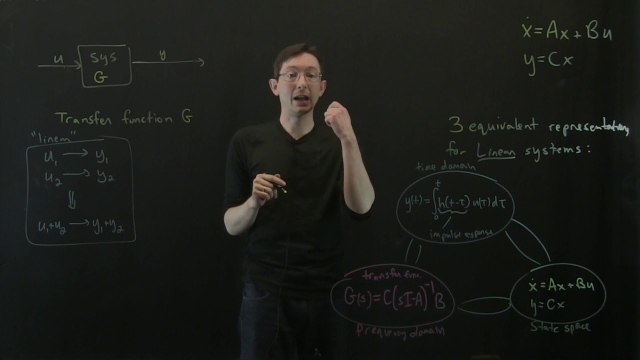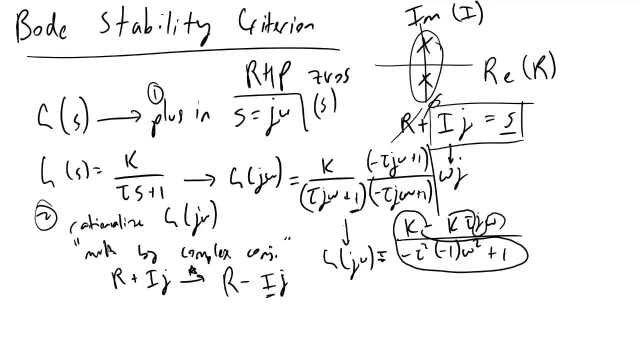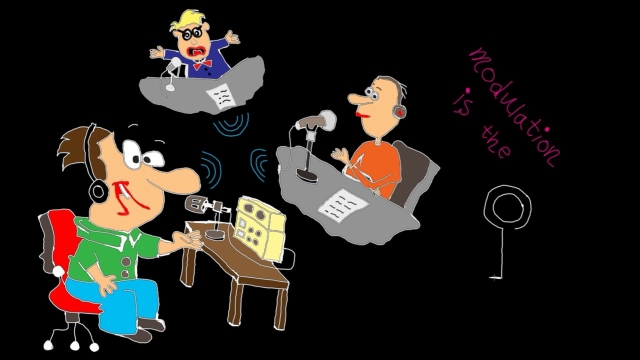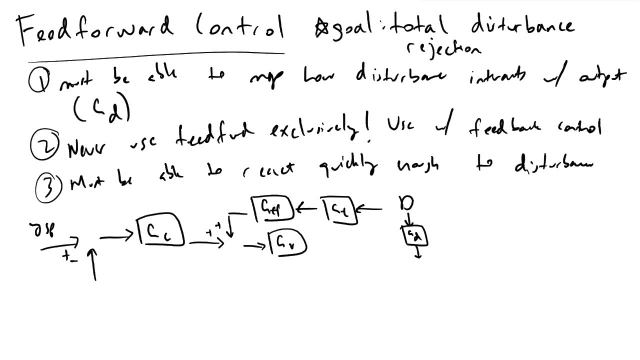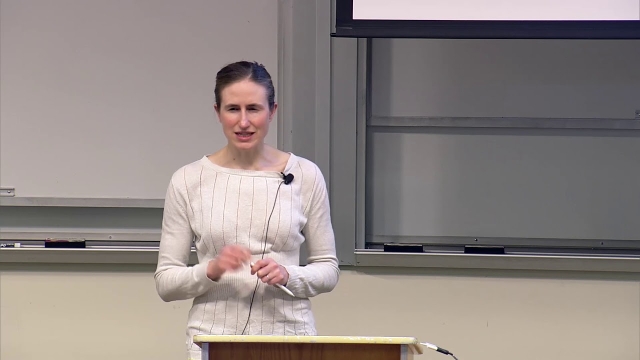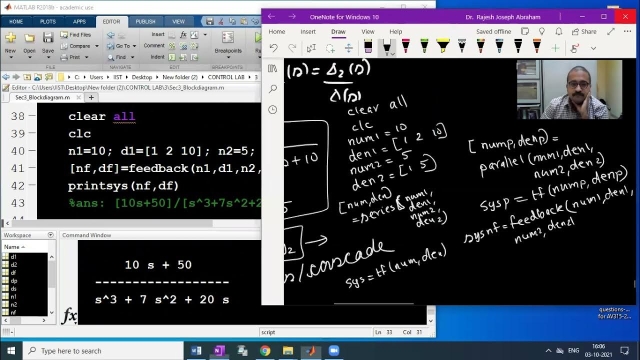
Cartesian, Polar, Cylindrical, and Spherical Coordinates
In this video we discuss Cartesian, Polar, Cylindrical, and Spherical coordinates as well as develop forward and reverse transformations to go from one coord...
See MoreReachability and Controllability with Cayley-Hamilton [Control Bootcamp]
Here we use the Cayley-Hamilton Theorem to show that the full state space is reachable if and only if the system is controllable.
See MoreUnderstanding Sensor Fusion and Tracking, Part 1: What Is Sensor Fusion?
This video provides an overview of what sensor fusion is and how it helps in the design of autonomous systems. It also covers a few scenarios that illustrate the various ways that sensor...
See MoreTime Domain Analysis with Matlab: Using the Linear System Analyzer
In this video we explore various Matlab functions and workflows to perform time domain analysis of a dynamic system. This includes the use of ‘tf’, ‘step’, ...
See MoreData-Driven Control: ERA and the Discrete-Time Impulse Response
In this lecture, we describe how the discrete-time impulse response is used in the eigensystem realization algorithm (ERA).
See MorePeter Ponders PID - Controlling an Under Damp Mass and Spring System
Demonstrates:How to calculate the PID gains. The importance of the derivative gain. How to simulate the mass and spring systemControl limitations based on s...
See MoreComputing Euler Angles: Tracking Attitude Using Quaternions
In this video we continue our discussion on how to track the attitude of a body in space using quaternions. The quaternion method is similar to the Euler Kinematical Equations and Poisson...
See MoreDrone Simulation and Control, Part 2: How Do You Get a Drone to Hover?
In the last video, we showed we can manipulate the four motors of a quadcopter to maneuver it in 3D space by getting it to roll, pitch, yaw, and change its thrust. We also covered the four...
See MoreLecture 6: Signal Flow Graphs and Mason's Gain Rule
Heat Transfer Demonstration
In this video we demonstrate heat transfer through a metal bar. By heating one side of the bar we can impose a non-uniform temperature distribution across t...
See MorePeter Ponders PID - Why PID with 2nd Derivative Gain?
If you have ever tuned a hydraulic system and wondered why PID control didn't work better than PI control the answer is here. Since the 1980s people have kn...
See MoreFourier Analysis: Overview
This video presents an overview of the Fourier Transform, which is one of the most important transformations in all of mathematical physics and engineering. This series will introduce the...
See MoreRandomized SVD: Power Iterations and Oversampling
This video discusses the randomized SVD and how to make it more accurate with power iterations (multiple passes through the data matrix) and oversampling.
See MoreTime domain - tutorial 5: signal properties
In this video, we learn about some special signals which are symmetric around the y-axis (even) or around the origin (odd) . Then we talk about periodic sign...
See MoreLecture 4: Electromechanical system Transfer functions and Analogous circuit...
Control Bootcamp: Three Equivalent Representations of Linear Systems
This video explores three equivalent representations of linear systems: State-space ODEs, Frequency domain transfer functions, and Time-domain impulse response convolution.
See MoreBode Stability Criterion in Frequency Response Analysis Intro
The Bode stability criterion allows us to quickly determine the stability and relative stability of a transfer function. It uses a graphical method that can ...
See MoreFrequency domain – tutorial 10: modulation
In this video, we learn about modulation technique which is commonly used in communication systems to send information from transmitter to receiver. The foll...
See MoreMachine Learning Goals
This lecture discusses the high-level goals of machine learning, and what we want out of our models. Goals include speed and accuracy, along with interpretability, generalizability...
See MoreFeedforward Control Intro
If we know how a disturbance will affect an output, we can proactively change our manipulated variable to counteract it.
See MoreStanford CS234: Reinforcement Learning | Winter 2019 | Lecture 7 - Imitation...
Professor Emma Brunskill
Assistant Professor, Computer Science
Stanford AI for Human Impact Lab
Stanford Artificial Intelligence Lab
Statistical Machine Learning Group
See MorePosicast Control 5 - (In English)
In this video Posicast in closed-loop is illustrated using a gantry-crane system simulations.
See MoreControl System with MATLAB - Block Diagram Reduction
Lecture 7: More on Signal Flow Graphs and Block Diagram Reduction
Lectures on Adaptive Control and Learning by Tansel Yucelen
A serie of lectures on the topic of adaptive controllers.
See More
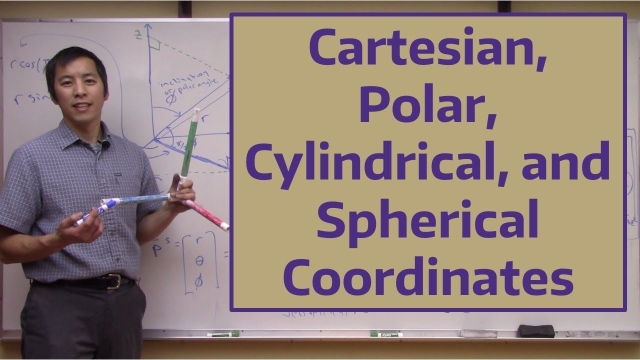
![Reachability and Controllability with Cayley-Hamilton [Control Bootcamp]](/sites/default/files/styles/search_resulkts/public/2020-12/maxresdefault_306.jpg?itok=SzmzyZ6Z)
